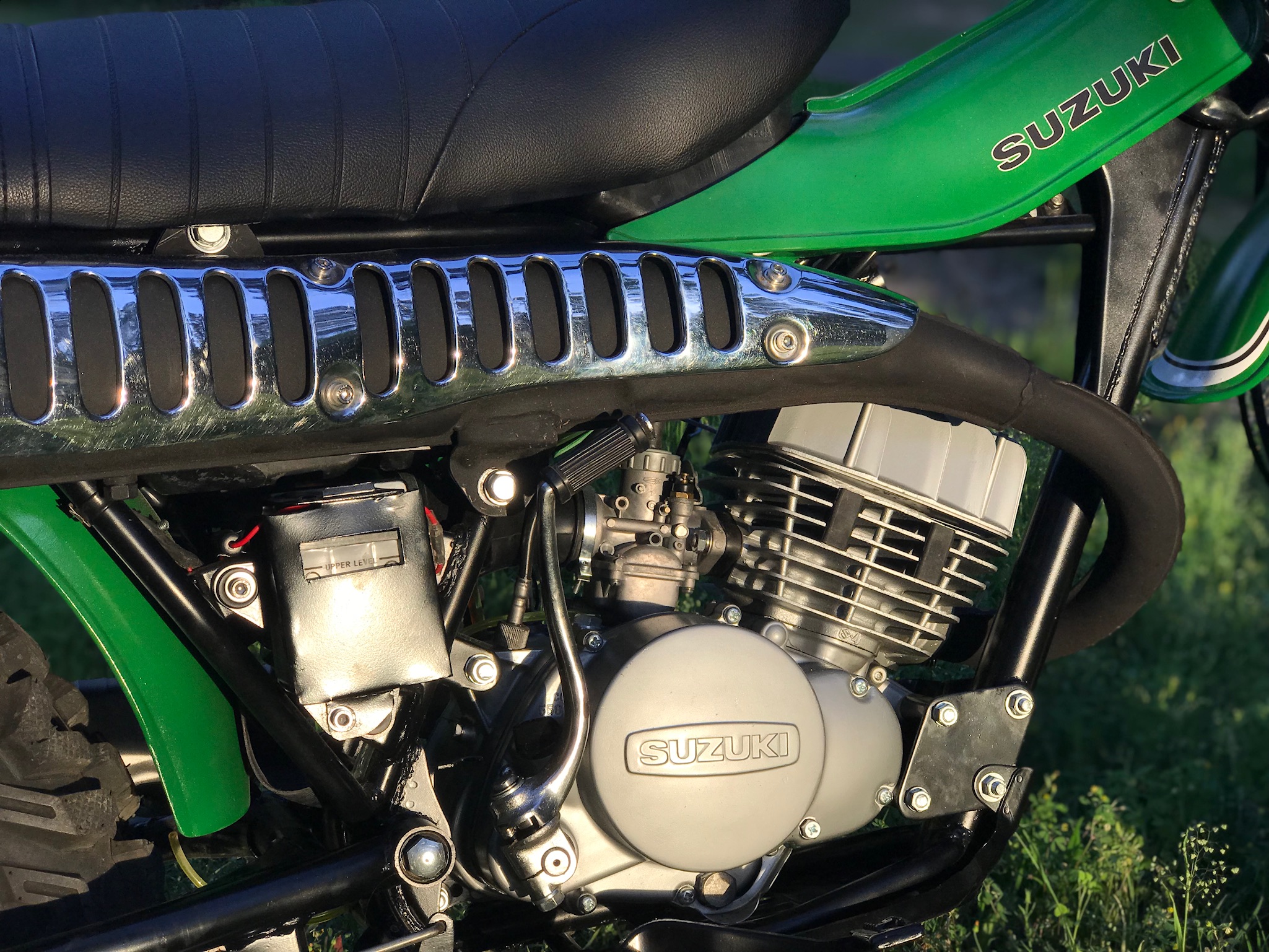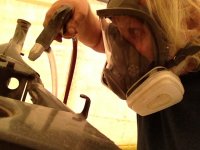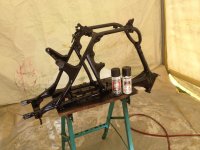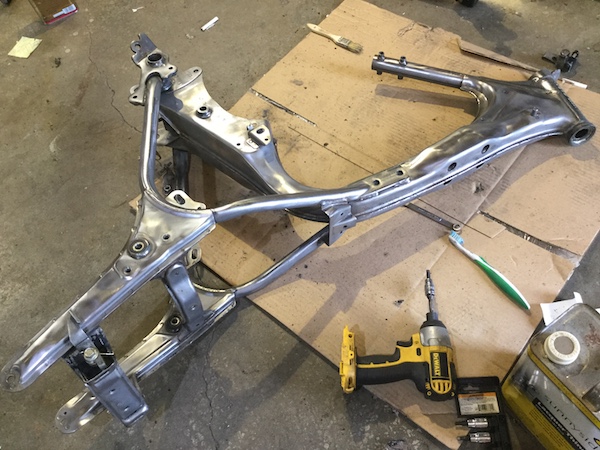d9canada
Just keep pluggin' every day and it'll get done!
I'm aware that many people have used Rustoleum Appliance paint for motorcycle frames.
I'd appreciate advice from people who've actually got experience using this product.
I have a number of Honda 4s I want to modestly restore. So far I've stripped them down and power-washed each chassis. I'm about to bead blast each one with the primary objective of stripping only rusted areas to bare metal - I'll carefully wet sand the original finish so long as it's otherwise in good shape. I don't have the capacity to entirely strip these frames to bare metal.
My first question is that Rustoleum's advice for the appliance paint is that no priming is necessary. That's basically the sum total of their online information. I've sent them a query but I'm not holding out for a detailed response. Normally with some sort of automotive paint, an etching primer would be a wise choice. Can anyone comment on Rustoleum appliance paint applied to bare metal?
My second concern is how well appliance paint adheres to original finishes - any problems? Any advice about preparation, etc. would be much appreciated.
I'd appreciate advice from people who've actually got experience using this product.
I have a number of Honda 4s I want to modestly restore. So far I've stripped them down and power-washed each chassis. I'm about to bead blast each one with the primary objective of stripping only rusted areas to bare metal - I'll carefully wet sand the original finish so long as it's otherwise in good shape. I don't have the capacity to entirely strip these frames to bare metal.
My first question is that Rustoleum's advice for the appliance paint is that no priming is necessary. That's basically the sum total of their online information. I've sent them a query but I'm not holding out for a detailed response. Normally with some sort of automotive paint, an etching primer would be a wise choice. Can anyone comment on Rustoleum appliance paint applied to bare metal?
My second concern is how well appliance paint adheres to original finishes - any problems? Any advice about preparation, etc. would be much appreciated.








